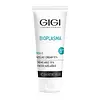What's inside
What's inside
 Key Ingredients
Key Ingredients

 Benefits
Benefits

 Concerns
Concerns

 Ingredients Side-by-side
Ingredients Side-by-side

Acrylates Copolymer
Cocamidopropyl Betaine
CleansingWater
Skin ConditioningMelaleuca Alternifolia Leaf Extract
PerfumingButylene Glycol
HumectantPotassium Cocoate
EmulsifyingGlycerin
HumectantOlea Europaea Fruit Oil
MaskingTriethanolamine
BufferingAlcohol Denat.
AntimicrobialSucrose
HumectantSodium Hydroxide
BufferingStearic Acid
CleansingBiotin
AntiseborrhoeicSodium Cocoyl Glycinate
CleansingSorbitan Stearate
EmulsifyingPalmitic Acid
EmollientSodium Cocoyl Apple Amino Acids
Skin ConditioningQuillaja Saponaria Bark Extract
CleansingSalvia Officinalis Leaf Extract
CleansingMorus Alba Extract
AstringentSodium Lauroyl Oat Amino Acids
CleansingPotassium Cocoyl Glycinate
Camellia Sinensis Leaf Extract
AntimicrobialRoyal Jelly Extract
Skin ConditioningSqualane
EmollientGelatin
Acacia Senegal Gum
MaskingCellulose Gum
Emulsion StabilisingPentaerythritol
Humectant1,2-Hexanediol
Skin ConditioningCarbomer
Emulsion StabilisingTromethamine
BufferingCitrus Limon Peel Oil
MaskingPEG-200 Castor Oil
EmulsifyingBeer Extract
Skin ConditioningAronia Arbutifolia Extract
Skin ConditioningCitrus Aurantifolia Oil
CleansingDisodium EDTA
Citrus Australasica Seed Oil
AntioxidantGlycine Soja Oil
EmollientPiper Nigrum Seed Oil
AstringentCarthamus Tinctorius Seed Oil
MaskingCorylus Avellana Seed Oil
EmollientEmu Oil
Skin ConditioningVitis Vinifera Seed Oil
EmollientMalt Extract
Skin ProtectingHydrolyzed Ginseng Saponins
Skin ConditioningAlbumen Extract
EmollientPunica Granatum Seed Oil
EmollientHelianthus Annuus Seed Oil
EmollientIllicium Verum Fruit/Seed Oil
MaskingCocos Nucifera Oil
MaskingTocopheryl Acetate
AntioxidantGlycine Soja Sterols
EmollientPEG-5 Rapeseed Sterol
CleansingCeteth-4
EmulsifyingCholesterol
EmollientBacillus
Skin ConditioningCaviar Oil
EmollientJuglans Regia Seed Oil
Skin ConditioningPhenoxyethanol
PreservativeCaprylyl Glycol
EmollientPyridoxine Hcl
Skin ConditioningMagnesium Ascorbyl Phosphate
AntioxidantPanthenol
Skin ConditioningLinoleic Acid
CleansingLinolenic Acid
CleansingRetinyl Palmitate
Skin ConditioningPotassium Cetyl Phosphate
EmulsifyingNiacinamide
SmoothingFortunella Margarita Peel Oil
Acrylates Copolymer, Cocamidopropyl Betaine, Water, Melaleuca Alternifolia Leaf Extract, Butylene Glycol, Potassium Cocoate, Glycerin, Olea Europaea Fruit Oil, Triethanolamine, Alcohol Denat., Sucrose, Sodium Hydroxide, Stearic Acid, Biotin, Sodium Cocoyl Glycinate, Sorbitan Stearate, Palmitic Acid, Sodium Cocoyl Apple Amino Acids, Quillaja Saponaria Bark Extract, Salvia Officinalis Leaf Extract, Morus Alba Extract, Sodium Lauroyl Oat Amino Acids, Potassium Cocoyl Glycinate, Camellia Sinensis Leaf Extract, Royal Jelly Extract, Squalane, Gelatin, Acacia Senegal Gum, Cellulose Gum, Pentaerythritol, 1,2-Hexanediol, Carbomer, Tromethamine, Citrus Limon Peel Oil, PEG-200 Castor Oil, Beer Extract, Aronia Arbutifolia Extract, Citrus Aurantifolia Oil, Disodium EDTA, Citrus Australasica Seed Oil, Glycine Soja Oil, Piper Nigrum Seed Oil, Carthamus Tinctorius Seed Oil, Corylus Avellana Seed Oil, Emu Oil, Vitis Vinifera Seed Oil, Malt Extract, Hydrolyzed Ginseng Saponins, Albumen Extract, Punica Granatum Seed Oil, Helianthus Annuus Seed Oil, Illicium Verum Fruit/Seed Oil, Cocos Nucifera Oil, Tocopheryl Acetate, Glycine Soja Sterols, PEG-5 Rapeseed Sterol, Ceteth-4, Cholesterol, Bacillus, Caviar Oil, Juglans Regia Seed Oil, Phenoxyethanol, Caprylyl Glycol, Pyridoxine Hcl, Magnesium Ascorbyl Phosphate, Panthenol, Linoleic Acid, Linolenic Acid, Retinyl Palmitate, Potassium Cetyl Phosphate, Niacinamide, Fortunella Margarita Peel Oil
Water
Skin ConditioningAzelaic Acid
BufferingPropylene Glycol
HumectantCetearyl Alcohol
EmollientCeteareth-20
CleansingCaprylic/Capric Triglyceride
MaskingGlycerin
HumectantVp/Va Copolymer
Butylene Glycol
HumectantPEG-60 Almond Glycerides
EmulsifyingCaprylyl Glycol
EmollientCarbomer
Emulsion StabilisingNordihydroguaiaretic Acid
AntioxidantOleanolic Acid
Skin ConditioningXanthan Gum
EmulsifyingBenzoic Acid
MaskingBisabolol
MaskingCI 77492
Cosmetic ColorantCI 77491
Cosmetic ColorantCI 77499
Cosmetic ColorantWater, Azelaic Acid, Propylene Glycol, Cetearyl Alcohol, Ceteareth-20, Caprylic/Capric Triglyceride, Glycerin, Vp/Va Copolymer, Butylene Glycol, PEG-60 Almond Glycerides, Caprylyl Glycol, Carbomer, Nordihydroguaiaretic Acid, Oleanolic Acid, Xanthan Gum, Benzoic Acid, Bisabolol, CI 77492, CI 77491, CI 77499
Alternatives
Ingredients Explained
These ingredients are found in both products.
Ingredients higher up in an ingredient list are typically present in a larger amount.
Butylene Glycol (or BG) is used within cosmetic products for a few different reasons:
Overall, Butylene Glycol is a safe and well-rounded ingredient that works well with other ingredients.
Though this ingredient works well with most skin types, some people with sensitive skin may experience a reaction such as allergic rashes, closed comedones, or itchiness.
Learn more about Butylene GlycolCaprylyl Glycol is a humectant and emollient, meaning it attracts and preserves moisture.
It is a common ingredient in many products, especially those designed to hydrate skin. The primary benefits are retaining moisture, skin softening, and promoting a healthy skin barrier.
Though Caprylyl Glycol is an alcohol derived from fatty acids, it is not the kind that can dry out skin.
This ingredient is also used as a preservative to extend the life of products. It has slight antimicrobial properties.
Learn more about Caprylyl GlycolCarbomer is a polymer of acrylic acid. Its main role is to create a gel consistency.
A high amount of carbomer can cause pilling or balling up of products. Don't worry, most products contain 1% or less of carbomer.
Glycerin is already naturally found in your skin. It helps moisturize and protect your skin.
A study from 2016 found glycerin to be more effective as a humectant than AHAs and hyaluronic acid.
As a humectant, it helps the skin stay hydrated by pulling moisture to your skin. The low molecular weight of glycerin allows it to pull moisture into the deeper layers of your skin.
Hydrated skin improves your skin barrier; Your skin barrier helps protect against irritants and bacteria.
Glycerin has also been found to have antimicrobial and antiviral properties. Due to these properties, glycerin is often used in wound and burn treatments.
In cosmetics, glycerin is usually derived from plants such as soybean or palm. However, it can also be sourced from animals, such as tallow or animal fat.
This ingredient is organic, colorless, odorless, and non-toxic.
Glycerin is the name for this ingredient in American English. British English uses Glycerol/Glycerine.
Learn more about GlycerinWater. It's the most common cosmetic ingredient of all. You'll usually see it at the top of ingredient lists, meaning that it makes up the largest part of the product.
So why is it so popular? Water most often acts as a solvent - this means that it helps dissolve other ingredients into the formulation.
You'll also recognize water as that liquid we all need to stay alive. If you see this, drink a glass of water. Stay hydrated!
Learn more about Water